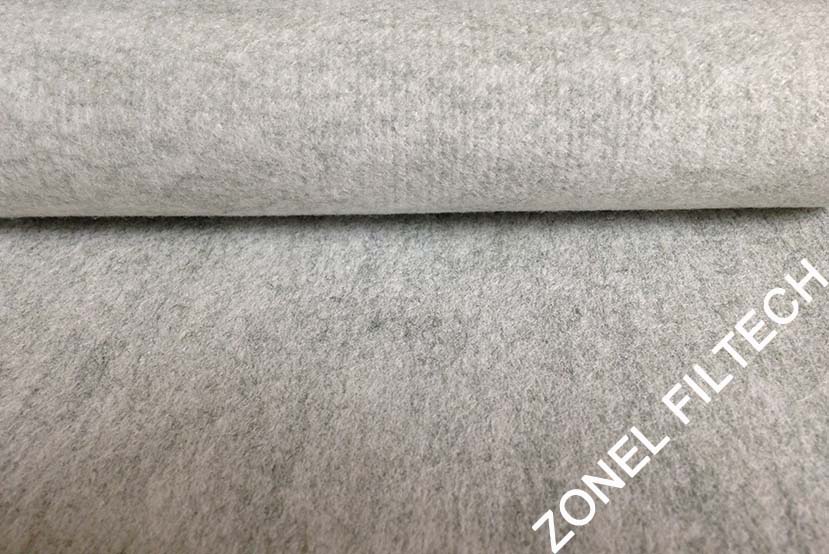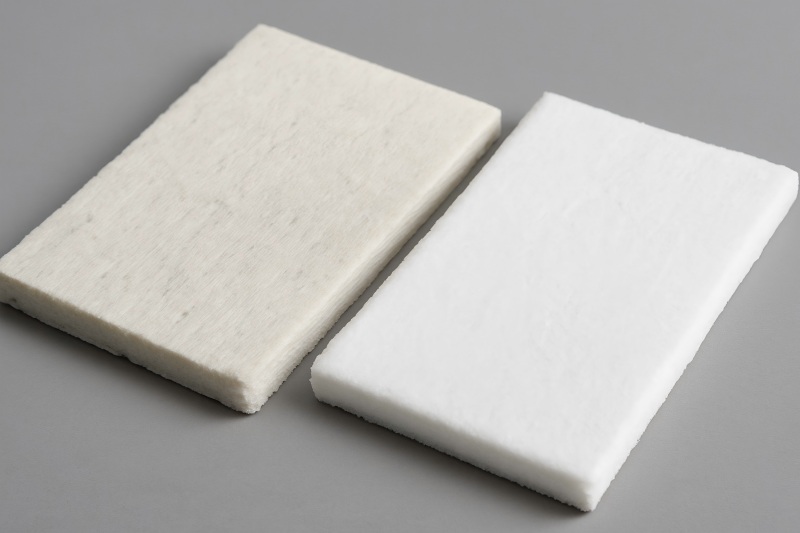Industrial dust collection has evolved dramatically over the last few decades. As manufacturing lines become faster, dust loads become heavier, and safety regulations grow stricter, industries now require filtration materials that not only trap fine particulates but also ensure operational safety. Among these materials, needlefelt filter cloth is the most widely used medium for dust filtration systems such as baghouse filters, pulse-jet systems, and industrial dust collectors.
But not all needle felt filter cloths are the same. The two most common types—anti-static needle felt and standard needle felt—serve different purposes, and choosing the wrong one can lead to poor filtration, rapidly rising differential pressure, reduced filter life, or even catastrophic dust explosions.
Table of Contents
ToggleWhat Is Needle Felt Filter Cloth?
Needle felt is a nonwoven filtration material produced through mechanical needle punching. Synthetic fibers such as polyester (PE), polypropylene (PP), aramid (Nomex), PPS, P84, and PTFE are entangled to form a three-dimensional porous structure. This structure provides:
- High filtration efficiency
- Low pressure drop
- Excellent dust cake build-up
- Strong mechanical strength
- Good temperature and chemical resistance
Standard needle felt serves as the backbone of industrial dust filtration. However, it lacks one critical feature—protection against electrostatic charge build-up.
In industries where dust is combustible (such as flour, coal, sugar, chemicals, plastic resin, aluminum, and pharmaceuticals), this lack of static control becomes a major hazard.

What Is Anti-Static Needle Felt Filter Cloth?
Anti-static needle felt filter cloth is designed to dissipate static electricity generated during dust movement, preventing sparks and minimizing explosion risk.
To achieve conductivity, manufacturers incorporate:
- Stainless steel conductive fibers
- Carbon/graphite fibers
- Conductive scrim layers
- Hybrid conductive coatings
- Electro-conductive blended yarns
The anti-static felt maintains all the benefits of standard needle felt but adds essential fire and explosion protection required in ATEX-certified environments.
Why Static Electricity Is Dangerous in Filtration Systems
Inside a dust collector, dust particles constantly collide with the filter surface, producing electrostatic charge. In combustible dust environments, even a small discharge spark can ignite a dust cloud.
Common industrial dusts prone to explosions:
- Flour and grain dust
- Aluminum and magnesium dust
- Wood dust
- Plastic resin powder
- Coal powder
- PVC, toner, pigment dust
- Sugar, starch, and pharmaceutical dust
Industrial standards such as ATEX, NFPA 652, NFPA 654, and regional safety regulations require anti-static filtration solutions whenever dust has explosive properties.

Key Differences Between Anti-Static and Standard Needle Felt
The differences fall into four main categories: safety, material design, electrical performance, and application environment.
Anti-Static vs Standard Needle Felt Filter Cloth
| Feature | Anti-Static Needle Felt | Standard Needle Felt |
| Static Charge Control | Yes – dissipates charge | No – charge accumulates |
| Conductive Fibers | Stainless steel / carbon | None |
| Explosion Protection | High – prevents ignition | Very low |
| Surface Resistivity | 10⁵–10⁸ Ω | >10¹² Ω |
| Typical Use | Explosive or flammable dust | General dust filtration |
| Price | Higher | Lower |
| Electrical Safety Certification | Available (ATEX, NFPA) | No special certification |
| Risk of Spark | Minimal | High in combustible dust environments |
| Lifespan | Long with correct grounding | Standard lifespan |
| Performance in High Dust Loads | Stable | May produce micro-discharges |
How Anti-Static Needle Felt Works
Anti-static needle felt safely dissipates static electricity through conductive pathways. These pathways are formed through:
Conductive Fiber Blending
Manufacturers blend conductive fibers into the structure, such as:
- Stainless steel fiber (1–3%)
- Carbon fibers
- Graphite-modified yarn
- Conductive polyester
As dust moves across the filter, charge is transferred to these fibers, which dissipate it safely to the grounding system.
Conductive Scrim Layer
Some designs feature a conductive core scrim, which acts as an internal “highway” for static electricity, improving grounding consistency and uniformity.
Advantages:
- Even distribution of conductivity
- Stronger structural support
- Lower chance of spark formation
Surface Resistivity Regulation
Anti-static felts are engineered to maintain surface resistivity within safe ranges:
- Anti-static requirement: 10⁵–10⁸ Ω
- Standard felt: >10¹² Ω
Lower resistivity means charge escapes faster, reducing ignition risk.
Standard Needle Felt: When Is It Enough?
Standard needle felt works perfectly when:
- Dust is non-combustible
- The environment has low static charge potential
- No flammable vapors or gases are present
- ATEX zones are not involved
Industries where standard felt is widely used:
- Iron and steel industry
- Power plants (non-coal)
- Mineral processing
- Sand, lime, cement dust (when not explosive)
- General industrial dust collection
However, even in non-explosive environments, anti-static felt may still be beneficial when humidity is low or dust is extremely fine.
Materials Used in Anti-Static and Standard Filter Cloths
Both types use similar base polymer materials:
Base Felt Media
- Polyester (PE)
- Polypropylene (PP)
- Aramid (Nomex)
- PPS (Ryton)
- P84
- PTFE (Teflon)
The difference lies in the conductive components used in anti-static versions.
Conductive Additives in Anti-Static Felt
- Stainless steel wire
- Carbon fiber
- Graphite powder
- Hybrid conductive coatings
- Conductive polyester blends
These additives slightly increase cost but drastically improve safety.
Performance Characteristics Comparison
Many users assume anti-static felt is only about safety, but it also provides measurable performance advantages.
Performance Comparison of Anti-Static vs Standard Needle Felt
| Performance Factor | Anti-Static Needle Felt | Standard Needle Felt |
| Filtration Efficiency | Excellent | Excellent |
| Resistance to Static Charge | High | None |
| Explosion Protection | Strong | Weak |
| Operating Temperature | Same as base material | Same as base material |
| Air Permeability | Slightly lower (due to fibers) | Higher |
| Dust Cake Formation | Stable and uniform | Stable |
| Pressure Drop | Stable | May fluctuate with static buildup |
| Cleaning Frequency | Lower | Higher when static causes dust clogging |
| Bag Longevity | Longer | Standard |
Applications for Anti-Static Needle Felt
Anti-static felt is essential in environments where combustion or explosion risk exists. Typical industries include:
Flour & Grain Processing
- Milling plants
- Feed factories
- Grain transportation systems
Fine organic dust + static is a known ignition source.
Chemical & Pharmaceutical Manufacturing
Many chemical powders are micro-sized, dry, and highly combustible.
Metalworking (Aluminum, Magnesium)
Metal dust is among the most explosive industrial dust types.
Coal-Fired Boilers & Mining
Coal dust ignites quickly, requiring only a small spark.
Plastic & Resin Powder
PVC, PE, PP, and polymer dust tends to generate high static charge.
Powder Coating & Paint Processing
Powder pigments are extremely fine and electrostatically active.
When Should You Choose Anti-Static Over Standard Needle Felt?
Use anti-static needle felt when any of the following conditions apply:
- Your dust type appears on the combustible dust list
- Static discharge could ignite vapors or gases
- Operating humidity is below 40%
- Dust particles are extremely fine (<10 microns)
- Your plant complies with ATEX or NFPA standards
- You have experienced sparks, unusual sounds, or burning smells in the baghouse
- Dust builds up excessively even after pulse-jet cleaning
Using standard needle felt in these conditions is risky and often non-compliant with safety regulations.
Cost Considerations
Anti-static needle felt typically costs 10–25% more due to:
- Conductive fibers
- Additional processing
- Certification processes
However, cost savings come from:
- Fewer fire hazards
- Reduced downtime
- Longer filter bag life
- Fewer cleaning cycles
- Regulatory compliance
Most facilities recover the cost difference within months.
Installation and Maintenance Differences
Although installation of both types is similar, anti-static systems require grounding.
Anti-Static Filter Grounding
Grounding ensures that any static charge traveling through conductive fibers flows safely away. Maintenance should include:
- Checking grounding straps
- Inspecting conductive fibers for breaks
- Ensuring bag cages are properly connected
Standard Needle Felt Maintenance
Standard felt only requires typical inspections for:
- Wear
- Shrinkage
- Damage
- Chemical degradation
Conclusion: Which One Should You Choose?
The choice between anti-static and standard needle felt filter cloth depends entirely on your dust characteristics and safety requirements.
Choose Standard Needle Felt If:
- The dust is non-combustible
- The process area has no risk of static discharge
- You want a cost-effective solution for general filtration
Choose Anti-Static Needle Felt If:
- Your dust is explosive, flammable, or fine
- You operate in an ATEX/NFPA-regulated zone
- Static sparks could ignite your process
- You want to reduce maintenance and prevent disasters
In many modern factories—especially chemical, pharmaceutical, mining, biomass, and food processing—anti-static needle felt is no longer optional but essential for safety and compliance.
